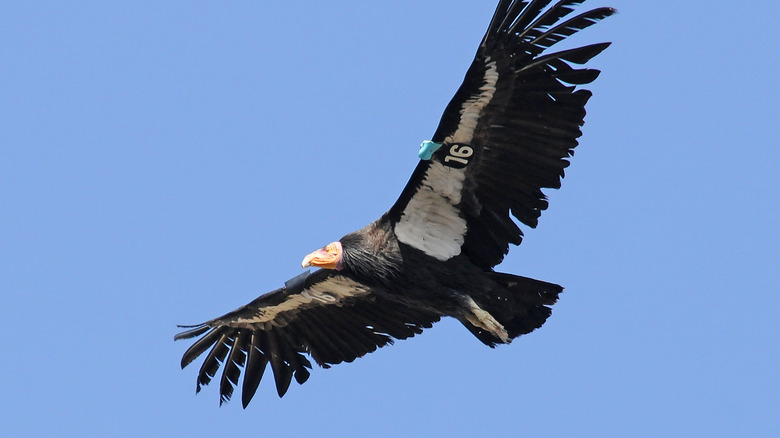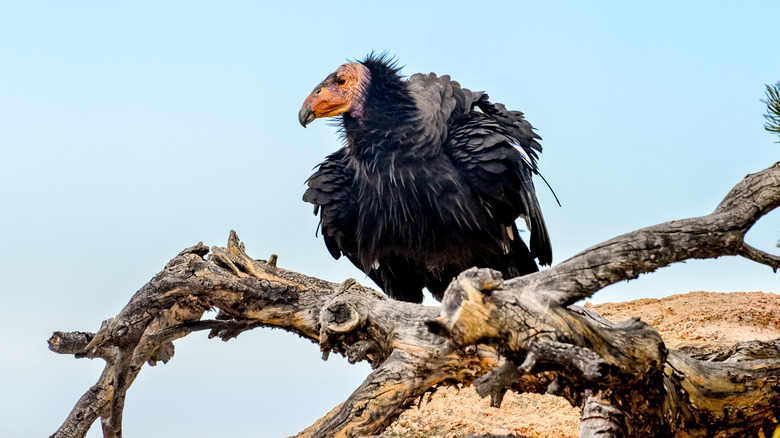The Real Reason California Condors Nearly Went Extinct
California Condors are some of the world's largest birds, but these winged wonders nearly went extinct when their numbers reached just a few dozen. According to Defenders, by 1987 there were just 27 known California Condors in the world, and hope seemed lost for the birds. After spending some years in captivity, those numbers steadily rose until they were reintroduced into the wild beginning in 1992. Over 300 condors live in the wild today, which, while promising, still makes the species critically endangered.
The cause for the concern around their fate isn't too surprising: humans. However, the way in which humans are responsible is rather unique, as it isn't all down to hunting, deforestation, or other common man-made causes of animal destruction. The most common cause of condor death is lead poisoning from eating spent ammunition in the wild; other problems include "microtrash," bits of glass and metal that a condor might accidentally feed to their young. Even something as specific as drinking antifreeze has contributed to the near-extinction of the California Condor.
The recovery program is a steady success
According to Smithsonian, the California Condor is the largest bird in North America, capable of soaring to heights around 15,000 feet. Yet despite its imposing physical characteristics — not to mention its menacing looks — the California Condor has struggled in the face of human interference. Hunting, habitat destruction, and pollution have also been factors alongside the more unusual causes of death like lead poisoning and microtrash.
Although the California Condor could have easily been another footnote in the all-too-long story of species driven to extinction by the carelessness of humanity, their recovery has been something of a success story. In 2019, the 1000th chick of the recovery program had been hatched, bringing the total population to an estimated 500. While California Condors are still critically endangered, and their numbers are microscopic compared to ancient times when they dominated the skies of the West Coast, humanity has been hard at work to right the wrongs brought upon these impressive birds.

